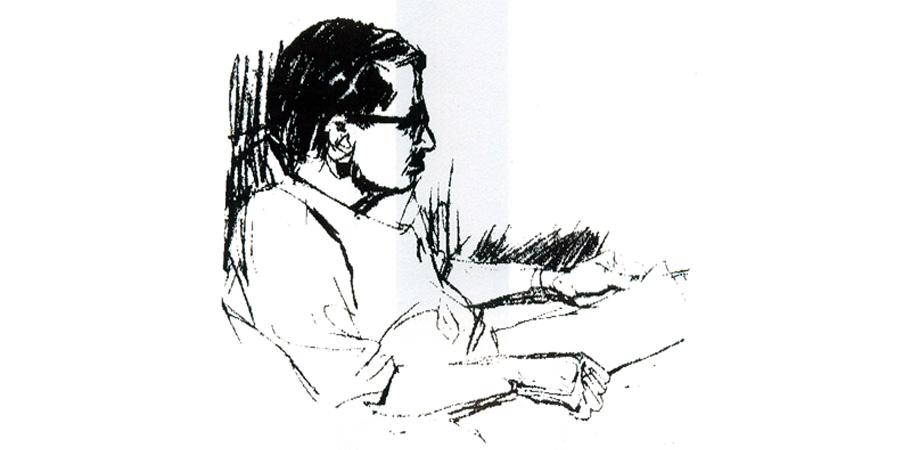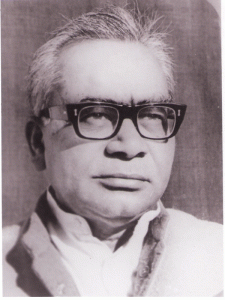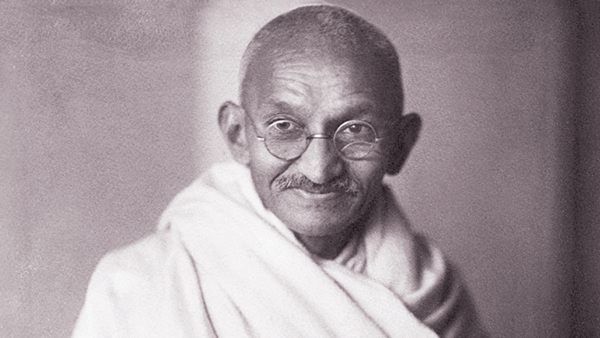VASANT NARGOLKAR
(Continue from Last issue…)
Deendayal, The Organizer, Par Excellence!

Deendayal Upadhyaya was a brilliant student. While studying, however, he was attracted to the Rashtriya Swayamsevak Sangh in 1937. After completing his B.A.B.T., he plunged into the organizational work of the R.S.S. in 1942 and was soon appointed the organizer for Lakhimpur district in U.P. Organization of the R.S.S. branches and spread of the idea of “the Hindu Nation” became his fist mission. The 1942 ‘Quit India’ movement does not seem to have interfered with his work. Dr. K. B. Hedgewar who founded the volunteer organization in 1925 with a view to awakening Hindus to the danger of Muslim communalism, used to participate in the satyagraha campaigns led by Gandhi before and even after 1925. But after his death in 1940, he was succeeded by Shri. M.S. Golwalkar alias Shri Guruji as the Supreme Director of the Sangh and it appears the earlier policy of participation in the national struggle for independence was abandoned. Be that as it may, Deendayal, between 1942 and 1947, in accordance with the policy of the R.S.S., carried on vigorous propaganda against the partition of the country. At the end of that period he rose to the position of Joint Provincial Pracharak in the organizational hierarchy of the Sangh in U.P.
Alter the cruel and cowardly assassination of Gandhi in 1948, the R.S.S. was banned by the Nehru government. Some time later, a countrywide satyagraha against the ban was started. The R.S.S. leaders disclaimed any involvement in the heinous crime. Deendayal was in charge of the agitation in U.P. As editor of a weekly Pa ncha janya which was published f tom Lucknow, he wrote strong articles in it against the policy of the government in respect of partition and Pakistan. The weekly was banned. After some time, the government lifted the ban on the R. S. S. and the branches of the volunteer organization started functioning openly again.
It was the policy of the R. S. S. to keep aloof from power or party politics. But it seems that those who wanted to protect the Hindu interests and promote the Hindu culture exclusively, began to feel the need for a poli¬tical front to propagate their views through elections and representation in the legislature. Deendayal himself was one of them. Soon enough, that is in October 1951, the Bharatiya Jan Sangh came into existence.
Who Spoke Gandhia’s Language?
The Jan Sangh opposed Nehru government’s policy of conferring on Jammu and Kashmir a special status under the Constitution. A satyagraha was also started. Deendayal, now the General Secretary of the Jan Sangh, was put in charge of the campaign. Dr. Mukherji, the first President of the Jan Sangh, offered satyagraha on the Kashmir issue. Unfortunately, while under detention in the Srinagar jail, he died.
The whole responsibility of building the party from the lowest units upwards then fell on Deendayal. In fact, between 1952 and 1968 when he met a mysterious death, he made it his exclusive mission to consolidate and improve the position of the Jan Sangh particularly in the northern states of India. He wrote articles in Organizer of Delhi. He also evolved an ideology for the Jan Sangh and named it “Integral Humanism.”
Like Lohia, Deendayal was a bitter critic of Nehru, but the grounds of their criticism were not entirely the same. Gandhi, however, admired Nehru and had hoped that ‘’after my death, Jawaharlal will speak my language.” Nehru did speak Gandhi’s language in respect of certain matters. But so far as planning, economic development and educational reforms were concerned, he rejected Gandhi’s ideas. Strangely, some others who were not so close to Gandhi as Nehru, started speaking Gandhi’s language. Among them were Lohia and Deendayal. They had long back realized that it would be difficult to banish poverty and unemployment from rural India, unless the country accepted wholeheartedly some of Gandhi’s ideas on political and economic decentralization and rural development. The criticism levelled against Nehru by Lohia and Deendayal was thus not personal. Criticizing a ruling party is part of democracy, but in the case of Lohia and Deendayal, it was a part of their sense of duty towards their people and a part of their mission.
What then is Gandhi’s message whether for India or for the whole world? Besides, was there anything common between his message and the messages that both Lohia and Deendayal have left behind them through their lifelong missionary work, speeches and writings?
Craze for Machinery, wrong
Gandhi had indeed left behind him a great legacy in the form the Sarvodaya ideology, every aspect of which could be construed as a message not only for the Indian people, but for the whole world. He had written extensively on democracy, freedorn, decentralization of political power, decentralization of the means of production, ends and means, truth and non-violence, satyagraha, secularism, socia¬lism, communism, swadeshi, man versus machine, evils of Western industrial civilization, trusteeship, education, self-restraint versus self-indulgence, nature cure, social and economic equality, brotherhood of man, war, atom bomb and peace and lastly, on spiritual development for self-realization which, according to him, should be the ultimate goal of man’s life on earth, not only for Indians, but for all mankind.
One of the most important items of Gandhi’s message to the world is the concept of bread labour and regulation of the extent of mechanization and automation in modern man’s life. We most earn our bread, he said, “in the sweat of our brow.” If the law of bread labour were followed, it would bring a silent revolution in the structure of society. His views on the limits to the use of machines have well been epitomised in the following passage thus:
“The supreme consideration is man. The machine should not tend to make atrophied the limbs of man. .. What I object to is the craze for machinery, not machi¬nery as such…. Men go on ‘saving labour’ till thou¬sands are without work and thrown on the open streets to die of starvation.”
Lohia’s views on Khadi and village industries could not be expected to be exactly the same as those of Gandhi. “I would rather have the spade”. He said “as the sun around which the system of constructive action revolves.” But he was opposed to the industrial system based on large-scale production. He pleaded for the small unit technology which was conducive to economic and politi¬cal democracy. There are other arguments also against the adoption of the pattern of large-scale industrial production, especially in countries where there is scarcity of capital and abundance of human labour. Besides, in a big factory or plant, a labourer becomes a mere cog in a huge machine which is incomprehensible to him. The work being mostly repetitive, is monotonous. Big industry, in order to Keep itself going, makes periodical and very destructive wars in. vitable. India cannot, and should not, imitate the develop¬ment pattern of the Communist countries because it wants to preserve democratic values and a democratic system of government.
Does Plenty Lead to Happiness?

The ultimate argument, which, not Lohia, but both Gandhi and Deendayal would put forward, is slightly spiritual in nature. It is agreed on all hands that poverty in itself is not a virtue and hence. must be abolished. But at the same time it must be borne in mind by the modern man, whether he be an American, Russian or Indian that material plenty does not necessarily conduce to happiness. The typically philosophical advice given by the ancient Indian civilization seems to be quite relevant here. It is ‘न जपतु काम:कामानामुपभोगेन शाम्यति’- The desire for pleasurable objects does not indeed subside as a result of enjoyment? The desire is endless and goes on increasing. All the most developed and rich countries like the U.S. A illustrate the point. There is comparatively more unhappiness there than in poor and undeveloped countries. The incidence, for example, of adult crime, juvenile delinquency, violence, permissiveness, alchoholism, divorces and mental illnesses is greater in affluent nations of the world. Pursuit of happiness, therefore, through material plenty created by the industrial system based on large-scale production may prove a mirage for India as well as for other developing countries.
(To be continued)…
(Source: Gandhi, Lohia and Deendayal, Edited by-P. Parameswaran,
Pub. by Deendayal Research Institute, New Delhi)


